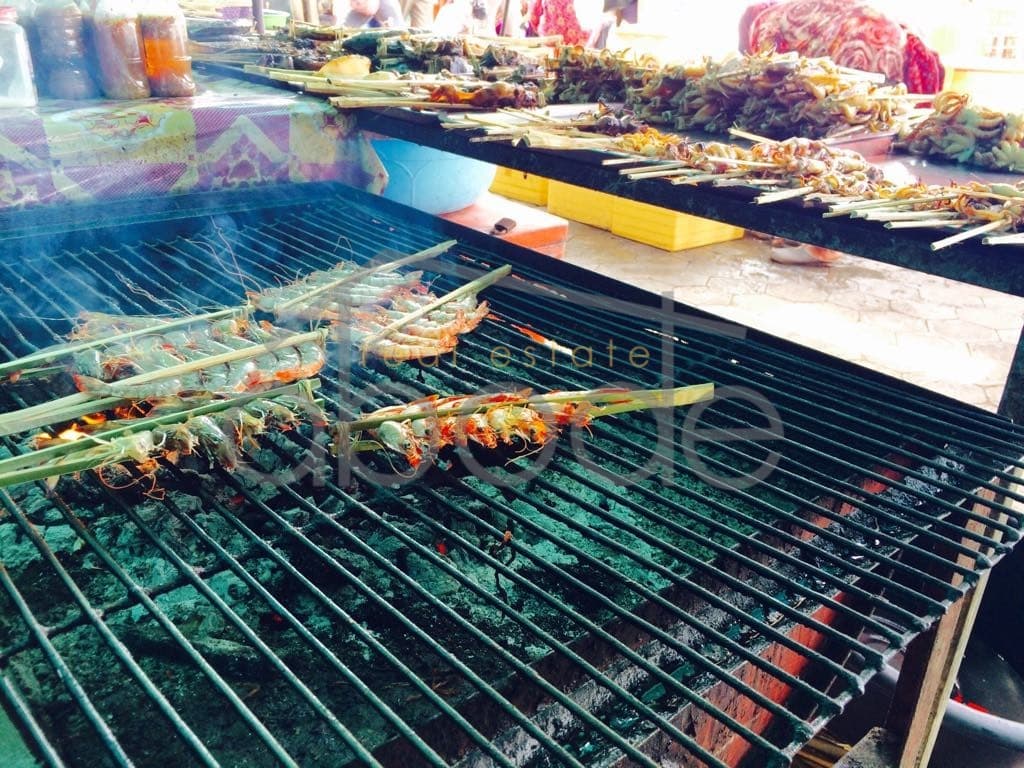Kep City is a beach town with the status of a province, just a few kilometres from Vietnam that has struggled financially (due to the Khmer Rouge) until recently.
A few remnants of its previous splendor can still be seen, despite the majority of the town’s primarily French homes being abandoned.
Large sidewalks and a few imposing statues that look largely out of place line the sea. The king constructed a palace that has a view of the Gulf of Thailand, but it is currently vacant and was never decorated.
The little town is connected to Kampot, 15km away, by a nice, paved road and Koh Thonsay (Rabbit Island) is only a half-hour boat trip away.
Its slightly darker beaches than those seen in Sihanoukville are primarily dotted with mangroves and black pebbles.
With a number of mid-range and upscale guesthouses and bungalows lately opening or still being built, Kep appears to be going through a revival.
The seafood is affordable, plentiful, and delicious, especially the crabs, which are extremely well-known.
A sizable national park encircling some mountains in lush vegetation is also located in Kep.

During the colonial era, the French founded the city in 1908. Today, domestic visitors are the largest group of travelers who chose Kep as their vacation location.
It also has fantastic seafood and stunning views of mountains and beaches.
Another breath-blowing experience is taking a boat to the surrounding islands. A trip to the tranquil waterfalls of “Tuk Chhou,” located approximately 10 kilometers from Kampot, is another itinerary that should not be missed.
The city was transformed into a luxurious coastal vacation destination for the wealthy and government, particularly in the 1960s during the Sang Kum Reas Ni Yum era.
According to the legend surrounding the name Kep, a king by the name of Sa Kor Reach possessed a powerful enchantment.
At AngKor Thum, he put a commander to sleep before robbing him of his white horse and taking his regiment with him to the southwest coast.
The commander’s forces overhauled him as he rested by the sea while they pursued him from behind. He suddenly mounted the horse, but the horse reared and knocked him and the saddle to the ground.
He then mounted his horse once more and escaped without picking up the saddle as the commander’s troops drew near.
Because of this, the area was once known as “Kep Seh,” which means “the saddle.”
It is now just known as “Kep.”
Geography
Kep sits southwest of Phnom Penh reached by National Road No. 3 from via Kampot province (173 km) or National Road No. 2 from via Takeo province.
The municipality is 336 square kilometers, situated in the country’s south, sharing borders with Kampot to the north, east, and west as well as the Gulf of Thailand to the south.
As there are some foothills from the Elephant Mountains coming from Kampot province, the province does not have as much of the typical flat, rainy landscape as other provinces in Cambodia.
You can see grey limestone hills that are similar to those in Vietnam but are not as sparse.
However, there are also areas with plantations of different crops and rice fields.
Population
Approximately 40,280 people, or 0.3% of the total population of the nation (14,363,519 persons in Cambodia as of 2007, according to provincial government figures), reside in this municipality.
Therefore, there are 119 individuals per square kilometer in the population.
Climate
The nation experiences a tropical environment that is hot and muggy. Numerous crops can be grown during the monsoon season due to the profusion of rain.
The tropical environment gives Cambodia the perfect place to grow the tourism industry.
Travelers shouldn’t be concerned about earthquakes or volcanic volcanoes, and tropical storms don’t directly touch the nation.
The entire year can be spent traveling to Cambodia. The last two months of the rainy season, when certain country roads may be inaccessible, should be avoided if you have considerable road travel plans.
The minimum temperature is approximately 16 degrees Celsius, with the average temperature being around 27 degrees. The coldest months are December and January, while April has the highest temperatures.
Economy
Along with the lucrative fruit crops like durian, mango, and coconut, Kep is also home to the Kampot Pepper, which has a long history of being considered one of the best peppers in the world.
When freshly harvested, this pepper has a highly distinct flavor and aroma.
It generates a powerful, subtle, and alluring aroma. As a result, it is famous throughout the world and exported to several nations.
Locals make an effort to concentrate on the tourism industry, catering to both locals and international visitors who enjoy this natural, distant, and tranquil region situated on the lovely Cambodian coastline.
From Kep Cambodia website:
“… Kep is a seaside town located on a group of hills going down to the beach. Cambodian and Vietnamese islands are just offshore.
It’s a half hour drive from Kampot, Cambodia a half hour to the Vietnamese border; and 2 hours from SihanoukVille and Phnom Penh, Cambodia.
Bungalows, villas, guesthouses, and hotels are located on the hillside and the beaches. Also, beach side bungalows on Rabbit Island.
There’s not a whole lot [here] mostly a place for relaxation, enjoying fresh seafood, going for walks, trekking though the hills, boating, fishing and island trips, bicycling and mountain biking, sitting on the beach, on the way to or from Vietnam.
Plenty of garden style resorts around the beaches and mountains. Most have swimming pools, air-con rooms, on-site restaurants, and are quite picturesque…”.
Tourism Infrastructure
According to the Tourism Infrastructure Project, tourism – specifically Kampot, Kep and Koh Kong – is expected to increase 500% by 2025.
Further, the Government’s Tourism aims to enhance (i) travel connections; (ii) product development; (iii) tourist safety; (iv) marketing; (v) the business environment; and (v) HR development.





